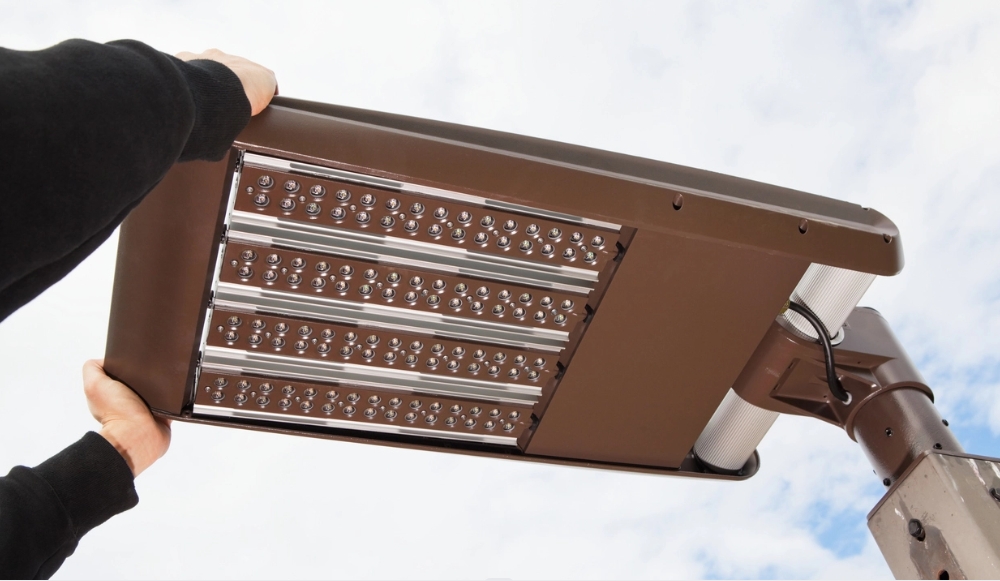LED lighting has become a popular choice for area lighting, but some people are still unsure of when they should replace their LED fixtures. It’s important to know when you need to replace your LED Konlite fixtures because they can be expensive and time consuming.
When it comes to replacing LED area light fixtures, there are several factors that come into play. These include:
Failure to Turn On
LEDs are known for their durability and long life, but they are not immune from failure. If your lights fail to turn on at all, this might indicate a problem with the batteries or power supply. A more common issue is that the bulbs were not installed properly or did not receive enough power to light up once turned on. To fix this problem, check all the connections between your bulbs and their battery packs. Make sure that each bulb has a wire connected to it and that its base is firmly placed in its socket.
Flickering or Inconsistent Light Output
LED fixtures tend to last longer than their traditional counterparts because they use fewer components and require less maintenance. However, even LED lights can experience issues that result in flickering or inconsistent light output. This is usually caused by loose connections inside the fixture or faulty wiring outside the fixture. If this happens, you should turn off the power at the breaker box and call an electrician so they can fix the problem before it becomes worse and causes damage to other parts of your home’s electrical system.
Change in Color Temperature
LED chips are made up of three colors: red, green and blue. Together, they create white light. The exact color temperature varies depending on the chip’s composition, but typically it ranges from 2200K to 6500K (or degrees Kelvin). If these chips start producing less blue light than usual, then it means that they’re reaching their end-of-life stage. The change in color temperature will be noticeable only if you’re looking closely at your fixture from a distance; otherwise, it may appear normal from afar.
Evidence of Serious Corrosion Problems
When exposed to moisture or condensation over time, corrosion can develop on electrical components within an LED area light fixture. This corrosion can cause short circuits and other electrical problems that could lead to fire hazards and even personal injury if left unchecked.
What to Do When Your LED Area Light Fixture Stops Working
A LED area light fixture is a great way to save energy, but they do have their limitations. One of the biggest problems with LED fixtures is that they can break down over time. If your LED fixture stops working, it can be frustrating and expensive.
Check your warranty
If your fixture is still under warranty, call the manufacturer’s customer service line and see if they can help you fix the problem. Many companies offer free lifetime warranties on their LED products, so don’t be afraid to ask for help!
Check the power supply
This is one of the most common reasons why an LED area light fixture stops working. If you have a fluorescent light fixture, look at the power cord and make sure all of the connections are firmly in place. If you have an incandescent light fixture, check to see if there are any loose connections in the bulb socket or wiring. If everything looks fine, move on to step two.
Check for loose wires in the circuit board of your LED area light fixture
If you have an incandescent light fixture and there was nothing wrong with the power supply or bulb socket, then there might be something wrong with your circuit board (or wiring). Look for wires that may have come loose from their terminals or connections on the back of your light fixture’s circuit board (if applicable). Tighten these connections with needle nose pliers and make sure they fit securely into place before plugging it back into
Conclusion
LED lighting is a booming industry, and the demand for LED lighting fixtures only seems to be going up. They’re used in everything from stadiums to your average factory floor, and LED technology is constantly being tweaked in order to improve on what’s available. So, if finding the right light is hard, selecting the right replacement may seem impossible with so many options. However, if you follow the criteria above to keep your options and costs under control, you’ll be able to find the best LED replacement for any situation.
